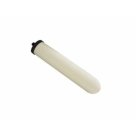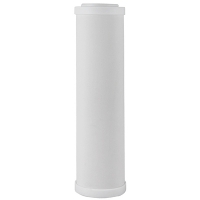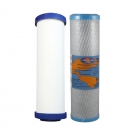DOULTON GENERIC
- LAB PUA FOOD SERVICE FILTERS
- Aqua Blue H2O Filters
- Suit for SAMSUNG
- Suit for LG
- Suit for WHIRLPOOL
- Suit for GE
- Suit for DAEWOO
- Suit for Fisher & Paykel
- Suit for ELECTROLUX
- Suit for WESTINHOUSE
- Suit for MAYTAG
- Suit for BOSCH
- Suit for ZIP
- Suit for 3M
- Suit for BEKO
- Suit for BRITA
- Suit for Hisense Filters
- Suit for Haier Filters
- Suit for Panasonic
- SHOWER FILTERS
- UNDERSINK SYSTEM
- CARAVAN FILTERS
- COUNTER TOP FILTERS
- Hose & Fitting Kit
- Aqua Blue H20 Whole house Solution
- SPOT FREE RINSE SYSTEM | WINDOW CLEAN
- RO SYSTEM
- AB HIGH FLOW SYSTEM
- Under Sink Filters
- Dirt/Rust & Sediment Cartridges
- Carbon filters
- Ceramic Filter
- Clearwater Filter System
- Carbon Block Sure Seal Filters
- Microfilter Water Filtet M9 Series
- Under Sink Filter System
- 3M Raindance Sure Seal
- DI RESIN CARTRIDGE
- Xsential Filters
- RO SYSTEM
- Under Sink Chillers
- Alkaline filter
- Paragon Filters
- DUAL FILTER CARTRIDGE
- Faucets for water filters
- Rainwater Tank & Whole House Water Filter System
- Samsung Fridge Filters
- LG Fridge Filters
- Fisher & Paykel Filters
- Electrolux Fridge Filters
- ZIP Water Filters
- Whirlpool Filters
- Maytag, JennAir, Amana Filters
- Westinghouse Fridge Filters
- Bosch Fridge Filters
- Daewoo Fridge Filters
- Kenmore Fridge Filters
- Billi Water Filters
- Miele Fridge Filters
- Smeg Fridge Filters
- Omega Fridge Filters
- Kemflo Fridge Filters
- Siemens Fridge Filters
- Beko Fridge Filters
- Hisense Fridge Filters
- Doulton Filters
- 3M Aqua Pure Water Filters - Cuno
- Counter Top Filters
- Eco Aqua Fridge Filters
- Installations & Servicing
- Test water pressure in the home
- Water Has Black Particles ?
- How To Find Model Number Of Your Fridge
- How To Reset The Water Filter Light
- Reset your Refrigerator Filter Indicator Light for All Brand
- Having problem replacing the water filter?
- How To Install The Water Filter Line
- How to test /Reset The Ice Maker in The Freezer
- How To Reset The Water Filter Indicator On a Samsung Fridge.
- How To Reset The Water Filter Indicator On a LG Fridge.
- How To Reset The Water Filter Indicator On Fisher&Paykel Fridge.
- How To Reset The Water Filter Indicator On a Daewoo Fridge.
- How To Reset The Water Filter Indicator On a Whirlpool Fridge.
- How To Reset The Water Filter Indicator On a GE Fridge.
- How To Reset The Water Filter Indicator On a Maytag Fridge.
- How To Reset The Water Filter Indicator On a Bosch Fridge.
- How To Reset The Water Filter Indicator On a Amana Fridge.
- How To Reset The Water Filter Indicator On a KichenAid Fridge.
- How To Reset The Water Filter Indicator On a Jenn-Air Fridge.
- How To Reset The Water Filter Indicator On Westinghouse Fridge.
- How To Reset The Water Filter Indicator On a Electrolux Fridge.
- How To Reset The Water Filter Indicator On a BEKO Fridge.
- How To Reset The Water Filter Indicator On a Kenmore Fridge.
- How To Reset The Water Filter Indicator On a Omega Fridge.
- How To Reset The Water Filter Indicator On a Smeg Fridge.
- How To Reset The Water Filter Indicator On a Miele Fridge.
- How To Reset The Water Filter Indicator On a HAIER Fridge.
- How To Reset The Water Filter Indicator On a Kleenmaid Fridge.
- How To Reset The Water Filter Indicator On a Hotpoint Fridge.
- Do not block air holes
- Haier Fridge Filters
- Everpure Cartridges
- Pentek Filters
- FiltaMate Pressure Limiting Valves
- Fridge Model With Filters
- Water Testing Equipment
- Omnipure Filters
- Omnifilters Filters
- Filter Housings and Housing Parts
- Fridge Water Filters
- Samsung Water Filters
- LG Fridge Water Filters
- FISHER AND PAYKEL
- WHIRLPOOL FRIDGE FILTER
- GE FRIDGE WATER FILTER
- Maytag Fridge Water Filter
- DAEWOO FRIDGGE WATER FILTERS
- AMANA FRIDGE WATER FILTER
- KITCHEN AID
- Jenn-Air
- BOSCH FRIDGE FILTERS
- BEKO FRIDGE FILTERS
- Westinghouse Fridge filter
- Electrolux Fridge Filter
- Kenmore
- Omega fridge filter
- Smeg fridge filter
- Miele
- Puretec Water Filters
- Birko Water Filters
- JOHNGUEST & FITTING
- Grey Acetal Fittings
- Straight Adaptor – BSPT Thread
- Straight Adaptor – BSP Thread
- Straight Adaptor – NPTF Thread
- Straight Adaptor – British Nipple Type
- Straight Adaptor – MFL Thread
- Outlet Adaptor – Parallel Thread
- Equal Straight Connector
- Reducing Straight Connector
- Equal Elbow
- Reducing Elbow
- Stem Elbow
- Rigid Elbow – NPTF Thread
- Equal Tee
- Reducing Tee
- Swivel Elbow – BSPT Thread
- Swivel Elbow – NPTF Thread
- Swivel Branch Tee – BSPT Thread
- Swivel Branch Tee – NPTF Thread
- Swivel Male Run Tee – BSPT Thread
- Swivel Male Run Tee – NPTF Thread
- Strain Relief Boot
- Female Adaptor – BSP Thread – Flat End
- Female Adaptor – BSP Thread – Cone End
- Female Adaptor – BSP Thread – Small Cone End
- Female Adaptor – British Whitworth Thread
- Female Adaptor – UNS Thread
- Female Adaptor – NPTF Thread
- Female Adaptor – FFL Thread
- Tap Adaptor – BSP Thread
- Tap Adaptor – BSP Thread – Flat End
- Tap Adaptor – UNS Thread
- Keg Beer Outlet Adaptor
- Keg Gas Inlet Adaptor
- Three-way Divider
- Two-way Divider
- Unequal Two-way Divider
- Bulkhead Connector
- Reducing Bulkhead Connector
- Stem Adaptor – BSPT Thread
- Stem Adaptor – BSP Thread
- Stem Adaptor – NPTF Thread
- Stem Adaptor – British Nipple Type
- Tube To Hose Stem
- Tube To Hose Stem – Long Version
- Tube To Hose Elbow
- Enlarger
- Reducer
- Cross
- Dispensing Valve Elbow
- Dispensing Valve Stem
- Offset Connector
- U-bend
- Plugs – Imperial Sizes
- End Stop – Imperial Sizes
- Cooling Manifold
- PolarClean
- White Acetal Fittings
- Equal Straight Connector
- Straight Adaptor – NPTF Thread
- Equal Elbow
- Stem Elbow
- Rigid Elbow – NPTF Thread
- Equal Tee
- Branch Stem Tee
- Stem Tee
- Bulkhead Connector
- Flat Seal Female Adaptor – BSP Thread
- Female Adaptor – NPTF Thread
- Stem Adaptor – NPTF Thread
- Reducer
- Barb Connector – Superseal X Barb
- Tube To Hose Elbow
- Tap Adaptor – UNS Thread
- Polypropylene Fittings
- Straight Adaptor – NPTF Thread
- Equal Straight Connector
- Reducing Straight Connector
- Equal Tee
- Reducing Tee
- Stem Tee
- Equal Elbow
- Reducing Elbow
- Stem Elbow
- Rigid Elbow – NPTF Thread
- Bulkhead Connector
- Reducing Bulkhead Connector
- Female Adaptor – NPTF Thread
- Tap Adaptor – UNS Thread
- Plug
- Tube To Hose Stem
- Reducer
- Stem Adaptor
- Unequal Divider
- Divider
- End Stop
- Two-way Divider
- Tap Connector
- Three-way Divider
- Superseal Fittings
- Straight Adaptor – BSPT Thread
- Straight Adaptor – BSP Thread
- Straight Adaptor – MFL Thread
- Straight Adaptor – Whitworth Thread
- Straight Connector – Superseal X Superseal
- Straight Connector – Superseal X Speedfit
- Metric Straight Connector – Superseal X Speedfit
- Elbow – Superseal X Superseal
- Elbow – Superseal X Speedfit
- Flow Bend Connector – Superseal X Speedfit
- Barb Connector
- Speedfit Bulkhead Connector
- Superseal Spanner
- Brass Fittings
- Metric to Imperial Adaptors
- CM Fittings
- Black Acetal Fittings
- Straight Adaptor – BSP Thread
- Straight Adaptor – BSPT Thread
- Equal Straight Connector
- Reducing Straight Connector
- Equal Elbow
- Reducing Elbow Connector
- Stem Elbow
- Rigid Elbow
- Equal Tee
- Reducing Tee
- Swivel Elbow – BSP Thread
- Swivel Elbow – BSPT Thread
- Swivel Tee – Centre Leg BSP Thread
- Swivel Tee – Centre Leg BSPT Thread
- Swivel Male Run Tee – BSP Thread
- Swivel Male Run Tee – BSPT Thread
- Bulkhead Connector
- Reducer
- Enlarger
- Stem Adaptor – BSP Thread
- Stem Adaptor – BSPT Thread
- Two-way Divider
- Two-way Divider - For the new BDA
- Plugs – Metric Sizes
- Tube To Hose Stem
- End Stop
- Female Adaptor
- Offset Connector
- U-bend
- White Polypropylene Fittings
- Acetal Angle Stop Valves
- Polypropylene Shut-Off Valve
- Acetal Shut-Off Valve
- Single Check Valves
- Double Check Valve
- Service Valves
- LLDPE Tubing
- Accessories
- Extra Fitting Part
- Plastic Push-fit Plumbing Fittings
- 10, 15, 22 & 28mm Size Fittings
- Brass Fitting
- Falcon 316L Stainless Steel Flexible Connectors
- Grey Acetal Fittings
- DMfit Fittings
- BRITA REPLACEMENT FILTER
- IKEA Fridge Filters
- Liebherr Fridge Filters
- Water Softener Filter for Washing Machine
- Caravan And Boat Filters
- Ceramic Stoneware flters
- Aqua Blue H20 Shower Filters
- Sprite Shower Filters
- Reverse Osmosis Water Filter System
- Coffee Filters
- Bulk Buy Discount
- SAMSUNG FILTERS
- LG FILTERS
- 5231JA2002A / LT500P BULK BUY
- 5231JA2006A / LT600P BULK BUY
- ADQ36006101 / LT700P BULK BUY
- ADQ73613401 / LT800P BULK BUY
- M7251253FR BULK BUY
- EXTERNAL FILTERS BULK BUY
- LT120F / ADQ73214404 LG AIR FILTER BULK BUY
- LT700P with AIR FILTER LT120F BULK BUY
- LT800P with AIR FILTER LT120F BULK BUY
- M7251253F-06 with AIR FILTER LT120F BULK BUY
- MDJ64844601 / LT1000P BULK BUY
- MDJ64844601 with AIR FILTER LT120F BULK BUY
- FISHER & PAYKEL FILTERS
- ELECTROLUX FILTERS
- WHIRLPOOL FILTERS
- GE FILTERS
- MAYTAG FILTERS
- BOSCH FILTERS
- DAEWOO FILTERS
- WESTINGHOUSE FILTERS
- SMEG FILTERS
- BEKO FILTERS
- OMNIPURE FILTERS
- Omnipure E5515-SB
- Omnipure ELF-10M-P
- Omnipure ELF-1ML
- Omnipure K2533-JJ
- Omnipure Q5520
- Omnipure OMB934-10M-P
- Omnipure OMB934-1MPB
- Omnipure Q5386
- Omnipure Q5405
- Omnipure K5520-BB
- Omnipure K5520-JJ
- Omnipure K2520-JJ
- Omnipure K2540-JJ
- Omnipure OMB934-0.5
- Omnipure CK5620
- Omnipure L5320
- Omnipure L5520
- Omnipure K2550
- Omnipure K2540-SS
- Omnipure SCL6
- Omnipure K2540-BB
- Omnipure CL10RO-T33
- Omnipure CL10RO-T40
- Omnipure SCL10-BB (3/8")
- Omnipure K2548-BB
- Omnipure K5555-BB
- Omnipure K5550-JJ
- ZIP FILTERS
- 3M CUNO FILTERS
- insinkerator
- UV GUARD Filter System - UV Lamp
- ISENSE FRIDGE WATER FILTER
- BWT
Top sellers
-

Fisher Paykel 847200...
$33.00 -

Samsung Fridge Filter...
$29.00 -

Samsung DA29-00003G...
$29.00 -

Fisher & Paykel...
$33.00 -

ELECTROLUX and...
$44.00
DOULTON GENERICThere are 4 products.

Ceramic water filters work by simply allowing the water to seep through tens of millions of pores in the water cartridge surface. In the process, organic and inorganic particulates too large to pass through (often anything larger than 0.5 micron) accumulate on the ceramic surface. As a point of reference, even cysts (like Cryptosporidium and Giardia) are too big in size to squeeze through the tiny pores of the ceramic filter cartridge.
Contaminants that may pass through the outer surface of the water filter cartridge are likely to be intercepted within the ceramic depth. Here inside the ceramic filter, even much smaller particles can be captured. This is because any remaining particulates in the water have to navigate through an intricate maze. This labyrinth of twists and turns involves so many sharp angles that contaminants that may have penetrated the topmost layer become trapped within the underlying complicated structure of the ceramic.
Many ceramic filters also incorporate a silver compound into the ceramic itself, because it acts as a bacteriostatic agent to repel bacterial growth in and on the filter. A granular activated carbon core may also be added to the ceramic core to reduce chlorine and other undesirable taste & odor issues–as well as pesticides.
Ceramic filtration does not remove chemical contaminants per se. However, some manufacturers (especially of ceramic candlefilters) incorporate a high-performance activated carbon core inside the ceramic filter cartridge that reduces organic & metallic contaminants. The active carbon absorbs compounds such as chlorine.
- View full site












































Phone: 02 9695 7740 | Email: sales@waterfilterforfridge.com.au | SAME DAY DISPATCH ORDER BEFORE 1PM
SAME DAY DISPATCH ORDER BEFORE 1PM